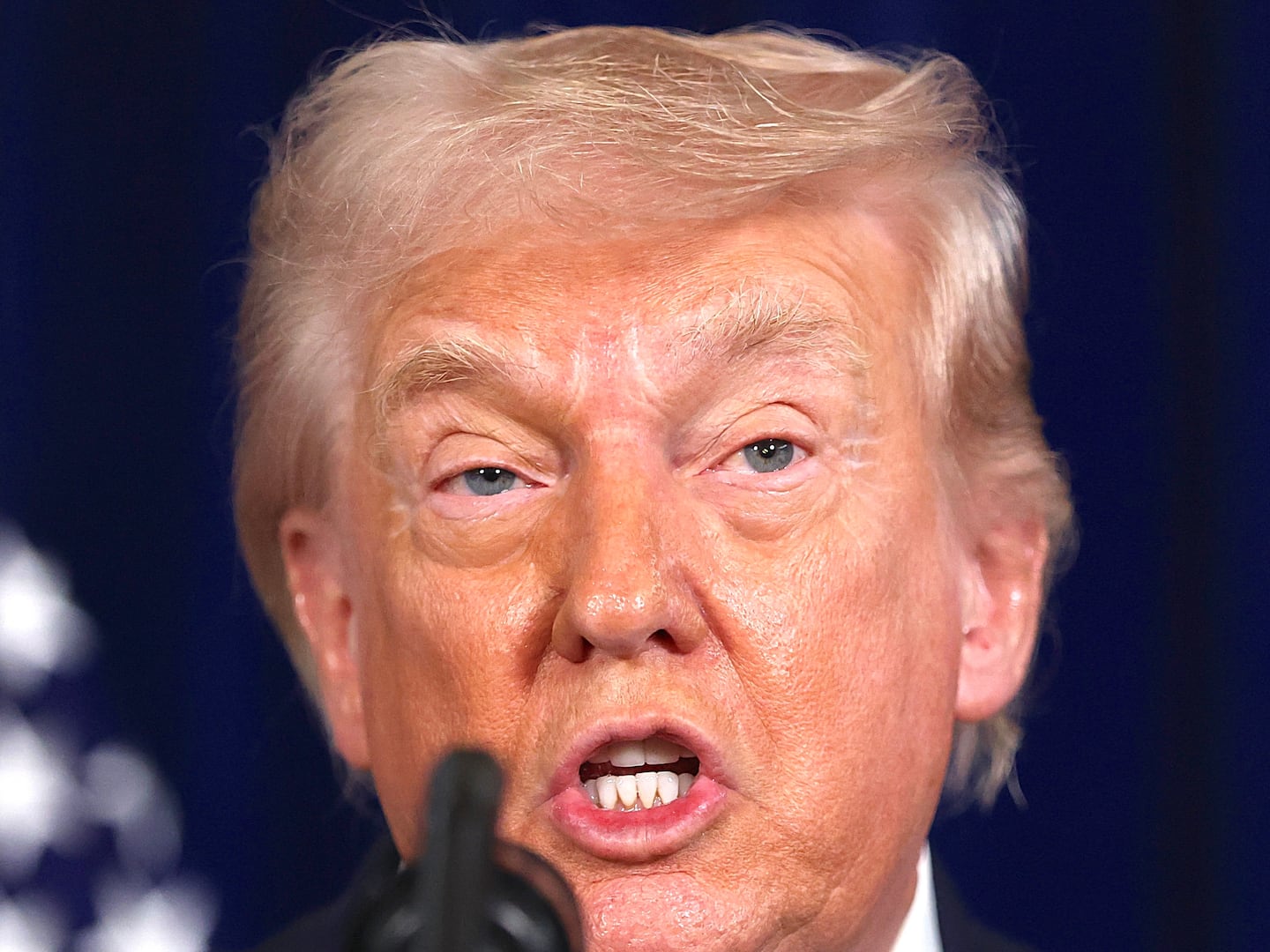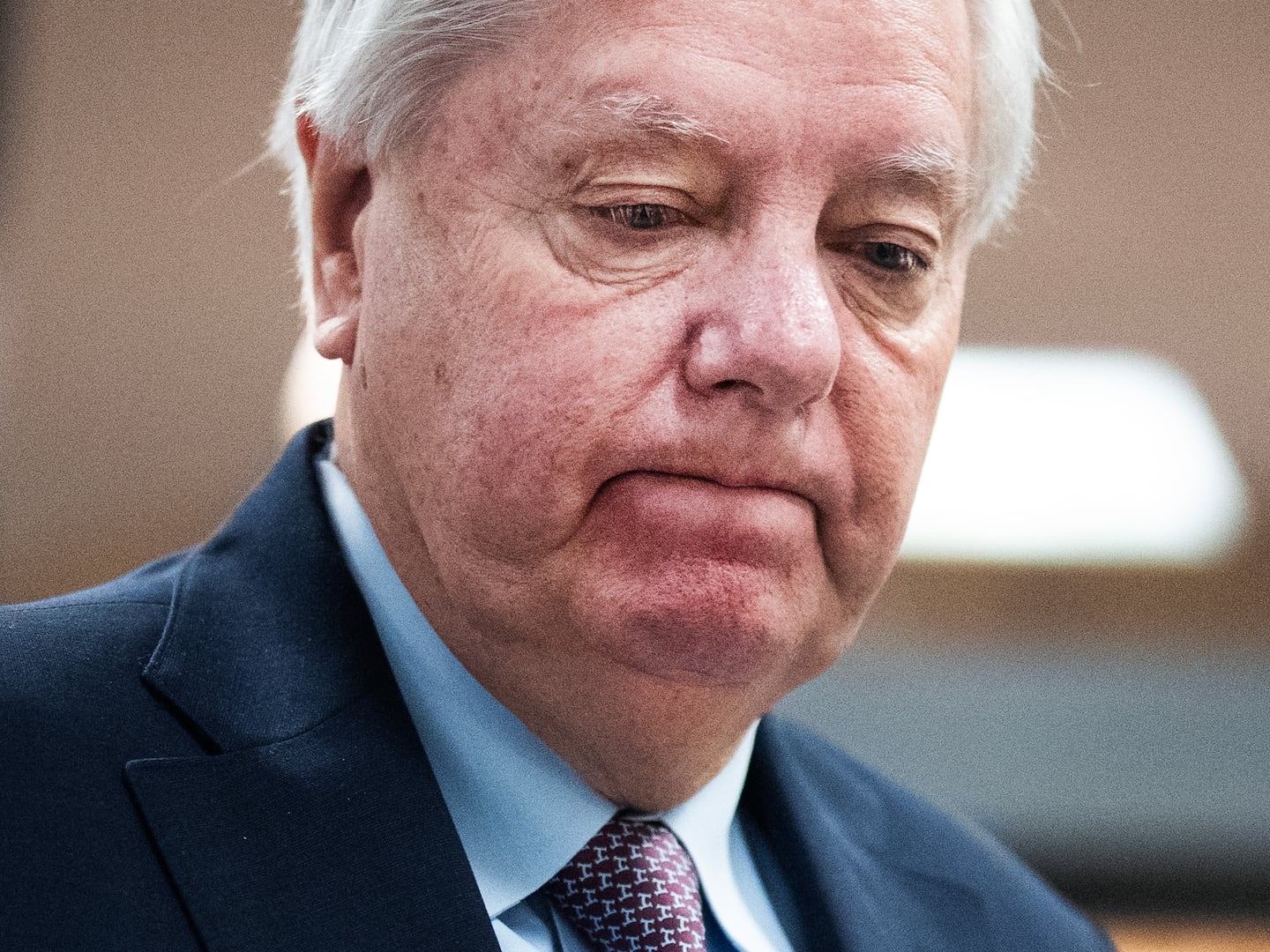Update: President Donald Trump on Wednesday once again promoted the baseless idea that a Democratic National Commitee server that was hacked in 2016 is being held in Ukraine. Below is a story The Daily Beast published last month about this conspiracy theory amid revelations that Trump asked the president of Ukraine to investigate it.
Donald Trump asked for more than a criminal investigation of his political opponent’s son in his call with Ukraine’s president. Trump also sought help in reviving a long-ago debunked conspiracy theory that challenges the basic underpinnings of the U.S. intelligence community’s findings on Russia’s 2016 election interference, in a bizarre spectacle that sees an American president trying to conscript a foreign leader into undermining his own intelligence agencies.
“I would like you to find out what happened with this whole situation with Ukraine, they say Crowdstrike,” Trump said, according to a compilation of notes on the call released by the White House. “I guess you have one of your wealthy people. The server, they say Ukraine has it.”
To those not versed in fringe-right canon, it’s a curious thing to say. “It almost sounds like he was babbling to the president of Ukraine,” said Robert Johnston, CEO of Adlumin, who led the DNC breach investigation while at Crowdstrike. “I imagine it would have confused the Ukranian president. Like, ‘What are you talking about?’”
Conservative websites are spinning the odd exchange as a reference to a Justice Department investigation ordered by William Barr into the origins of the Mueller probe. “It is unclear specifically what Trump was referring to with Crowdstrike,” reads one article in this vein on The Federalist. In truth, it’s actually quite clear. Trump is referencing a conspiracy theory pushed by Russian trolls and far-right pundits that imagines the Democratic National Committee fabricating all the evidence in Russia’s 2016 breach of the DNC network.
The hoax has its roots in a GRU persona, “Guccifer 2.0,” created to cast doubt on Russia’s culpability in the DNC hack. Today it’s buttressed by deceptive blog posts, memes, and putative forensic analysis of metadata in documents leaked from the DNC and John Podesta intrusions, and has spun out several related theories and offshoots, including the Seth Rich hoax that blames the hack on a slain DNC staffer with previously-unknown hacking skills.
Crowdstrike enters the picture because it’s the security firm the DNC hired to investigate the breach back in 2016, and the first of many to identify Russia’s military intelligence agency, the GRU, as the perpetrator. A publicly-traded company headquartered in California, Crowdstrike has nothing to do with Ukraine, except in conspiracyland, which pretends that Crowdstrike co-founder Dmitri Alperovitch is Ukrainian, and that he framed Russia for election interference both on the DNC’s orders and to punish Putin for invading his homeland.
In real life, Alperovitch is an American citizen born in Russia who escaped to the U.S. with his family during the Soviet era. But Trump has shown a pronounced preference for the pretend version.
“Why wouldn’t Podesta and Hillary Clinton allow the FBI to see the server?” Trump asked the AP in 2017. “They brought in another company that I hear is Ukrainian-based… I heard it’s owned by a very rich Ukrainian, that’s what I heard.”
The “server” in the conspiracy is the hacked DNC server that the Democrats, the claim goes, won’t let the FBI examine because it would expose their elaborate plot. “What is the server saying?” Trump asked in one tweet last year.
That part’s made up, too. The DNC turned down one unusual FBI request early in the hack investigation. The bureau wanted access to the DNC’s network while the Russians were still in it, most likely to stage a counter operation against the GRU. The DNC declined, perhaps reluctant to have two intelligence agencies playing capture-the-flag in their systems five months before a presidential election. The DNC later authorized Crowdstrike to share full copies of the hacked servers with the bureau, giving the FBI access to the same evidence Crowdstrike had.
“With regards to our investigation of the DNC hack in 2016, we provided all forensic evidence and analysis to the FBI,” Crowdstrike said in a statement Wednesday. “As we’ve stated before, we stand by our findings and conclusions that have been fully supported by the US Intelligence community.”
In truth, Crowdstrike’s findings were never controversial among security experts, and they were later confirmed by FBI agents with access to the same evidence, as well as additional evidence Crowdstrike never had. In October 2018, Robert Mueller indicted 12 GRU officers for the DNC intrusion and hacks targeting John Podesta and the DCCC.
Today the secret server hoax is mostly confined to the very edge of the conservative fringe, though it’s made an appearance in court. Indicted former Trump campaign advisor Roger Stone has been using the theory to try and get evidence against him thrown out of court, even filing an affidavit written by William Binney, one of the conspiracy theory’s most dogged advocates. Last week the federal judge overseeing Stone’s obstruction of justice case rejected his motion without ruling on the conspiracy theory itself.






